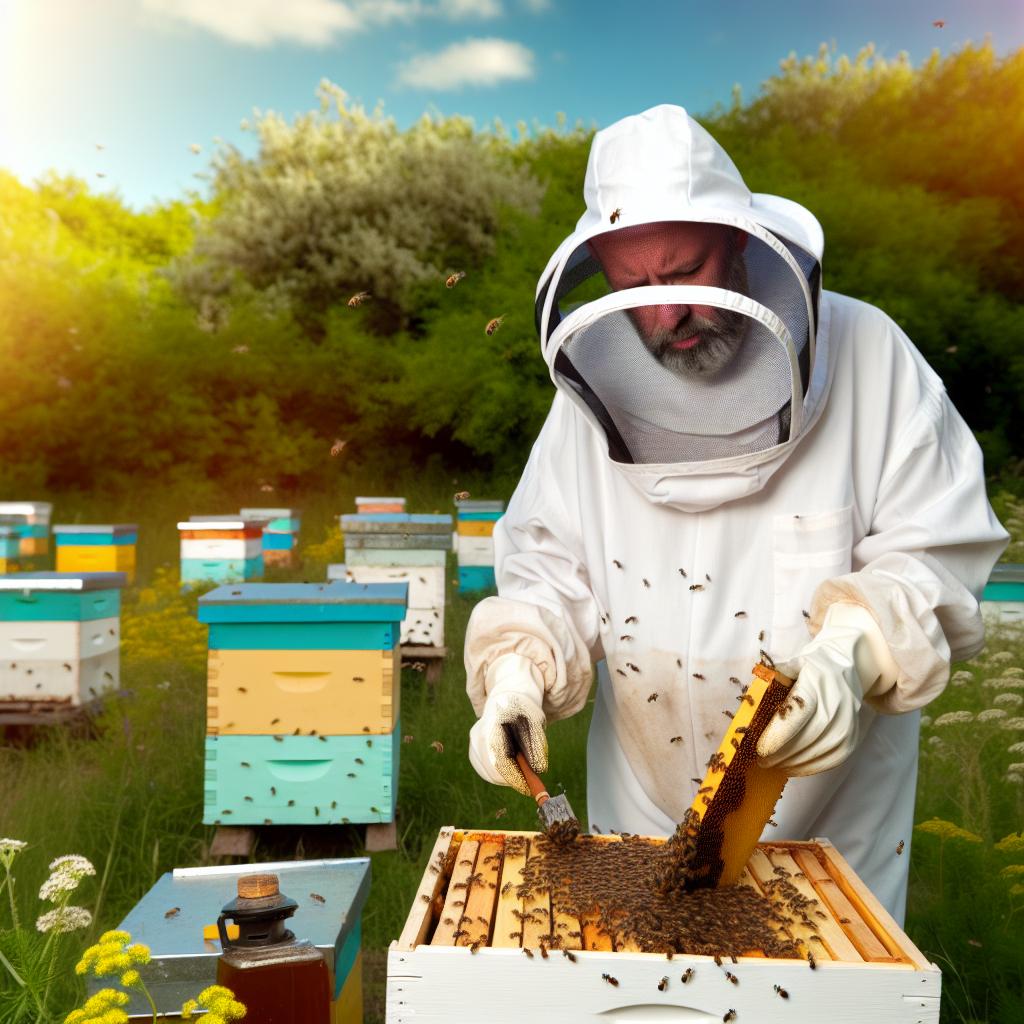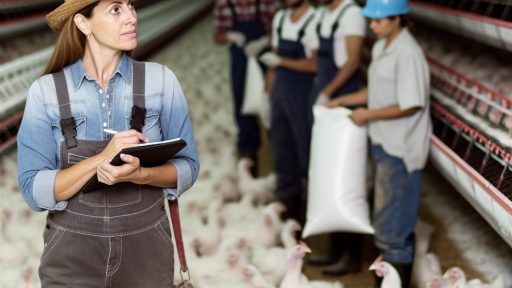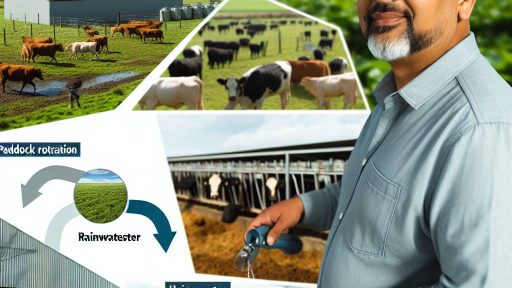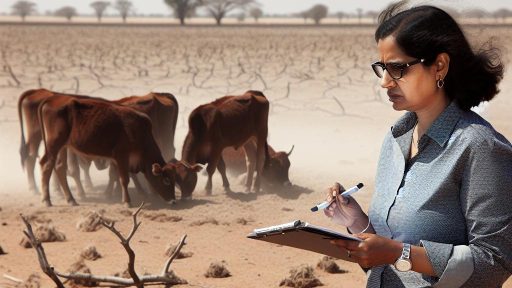Understanding Colony Collapse Disorder
Defining Colony Collapse Disorder
Colony Collapse Disorder (CCD) refers to a phenomenon affecting honeybee populations.
This disorder leads to the sudden loss of adult bees in a colony.
As a result, entire colonies can become unproductive or die off completely.
Understanding CCD is crucial for beekeepers to maintain healthy hives.
Causes of Colony Collapse Disorder
The exact causes of CCD remain unclear, but several factors are involved.
Firstly, pesticides play a significant role in bee health deterioration.
Certain insecticides, particularly neonicotinoids, are especially harmful.
Secondly, parasites like Varroa mites weaken bee colonies.
These mites attach to bees and feed on their bodily fluids.
Additionally, viruses and pathogens can infect bees and spread rapidly.
Lastly, environmental stressors, such as habitat loss and climate change, exacerbate the condition.
Symptoms of Colony Collapse Disorder
Identifying symptoms of CCD is vital for beekeepers.
One notable sign includes the absence of adult bees in their hive.
You might also notice a lack of food resources, like honey and pollen.
Often, the colony will have an abundance of bees’ brood and eggs.
Transform Your Agribusiness
Unlock your farm's potential with expert advice tailored to your needs. Get actionable steps that drive real results.
Get StartedMoreover, surviving bees may exhibit disorientation or erratic foraging patterns.
Effectively recognizing these symptoms aids in timely intervention.
Impact on the Environment and Agriculture
The implications of CCD extend beyond beekeepers.
Bees play a crucial role in pollinating many crops.
This pollination supports food production and biodiversity.
Consequently, the decline of bee populations can threaten food security.
Moreover, reduced bee health can affect entire ecosystems dependent on these pollinators.
Importance of Early Detection and Response
Early detection of CCD symptoms helps in mitigating losses.
Being proactive allows beekeepers to adjust management practices.
Consider regularly inspecting your hives for health indicators.
In addition, staying informed about the latest research can provide useful insights.
Ultimately, awareness and action are key to combating CCD.
The Importance of Regular Hive Inspections to Monitor Bee Health
Regular hive inspections are crucial for beekeepers.
They help in monitoring the overall health of the colony.
Additionally, these inspections allow early detection of potential issues.
Beekeepers should check for signs of disease or pests regularly.
Assessing Colony Strength
Evaluating the strength of the colony is essential.
A strong colony has a vibrant queen and plenty of workers.
Look for brood patterns to gauge reproductive success.
A healthy brood pattern indicates a thriving colony.
Moreover, keep an eye on food stores, especially during winter.
Identifying Pests and Diseases
Pests can quickly infest a hive, leading to decline.
Varroa mites are one of the most common threats.
Inspect for signs of these mites, such as deformed bees.
Showcase Your Farming Business
Publish your professional farming services profile on our blog for a one-time fee of $200 and reach a dedicated audience of farmers and agribusiness owners.
Publish Your ProfileFungal and bacterial diseases can also affect bee health.
Keep informed about the latest disease prevention techniques.
Monitoring Hive Conditions
The environment plays a significant role in bee health.
Temperature and humidity levels must remain stable.
Install proper ventilation to prevent moisture buildup.
Additionally, ensure that the hive is free from contaminants.
Regular inspections help maintain an optimal living condition.
Enhancing Bee Nutrition
Nutrition is vital for a healthy bee colony.
It directly impacts their ability to fend off diseases.
Provide supplemental feeding during dearth periods.
Consider protein patties for brood development.
Moreover, ensure bees have access to diverse floral sources.
Implementing Best Practices
Follow best practices to maintain hive health.
Practice good biosecurity measures to prevent disease spread.
Rotate hives regularly to reduce stress on colonies.
Engage with local beekeeping associations for support.
Stay updated on research and new techniques in beekeeping.
Nutritional Needs of Bees
Importance of a Balanced Diet
Bees require a balanced diet to thrive and produce honey.
This diet primarily consists of nectar and pollen.
Nectar provides essential carbohydrates for energy.
Pollen offers proteins, fats, vitamins, and minerals necessary for growth.
Moreover, a well-nourished colony is more resilient against diseases.
Sources of Nutrition
Provide bees with a variety of nectar sources.
Wildflowers, fruit trees, and crops like clover are excellent options.
Ensure these plants bloom continuously for diverse nutrition.
Furthermore, include trees such as willows and maples to support early foragers.
Supplementing Diets
Sometimes natural foraging is insufficient for bees.
During these times, consider supplemental feeding.
Check sugar syrup for easy energy sources.
Pollen substitutes can also fill nutrient gaps.
Use quality products from reputable suppliers for supplements.
Monitoring Bee Health
Regularly assess nutritional levels within your colony.
This practice helps ensure they have adequate resources.
Look for signs of malnutrition, such as decreased activity.
Monitor honey stores and ensure a good balance is maintained.
Seasonal Considerations
Different seasons affect bee nutrition requirements.
Spring brings diverse blooming sources, while winter may require more supplements.
Plan for seasonal changes to maintain a healthy diet.
Store adequate supplies before winter to support bees.
Explore Further: Organic Livestock Farming for Regenerative Practices
Showcase Your Farming Business
Publish your professional farming services profile on our blog for a one-time fee of $200 and reach a dedicated audience of farmers and agribusiness owners.
Publish Your ProfilePest and Disease Management Strategies for Beekeepers
Identifying Common Pests and Diseases
Beekeepers must regularly inspect hives for pests and diseases.
Varroa mites are one of the most significant threats to honeybee colonies.
These mites can weaken bees and spread diseases like deformed wing virus.
Additionally, American foulbrood is a bacterial disease that can wipe out a colony.
Be aware of symptoms such as unusual brood patterns and foul odors.
Implementing Effective Control Methods
Use integrated pest management (IPM) strategies to control pests.
Start by maintaining strong, healthy colonies.
Provide enough food and proper shelter to reduce stress.
Consider using screened bottom boards to help control varroa mite populations.
Regularly monitor mite levels and apply treatments as necessary.
Utilizing Natural Remedies
Natural remedies can be effective in managing pests.
Essential oils, such as thyme and tea tree oil, can deter mites.
Candipol, a natural sugar solution, is also useful for varroa management.
Moreover, using drone brood removal can help decrease mite populations.
Maintaining Hive Health
Strong colonies are less susceptible to pests and diseases.
Regular inspections can help you monitor brood patterns and overall hive activity.
Ensure bees have adequate ventilation to prevent moisture buildup.
Feed your bees sugar syrup during times of nectar scarcity.
Collaborating with Other Beekeepers
Engage with local beekeeping clubs for shared knowledge.
Attend workshops and seminars to stay informed on best practices.
Sharing experiences and advice can enhance your pest and disease management.
Furthermore, consider participating in cooperative disease monitoring programs.
Delve into the Subject: Grazing Systems for Improving Forage Growth and Soil Fertility
The Role of Genetics in Hive Resilience Against CCD
Understanding Genetics in Bees
The genetics of honey bees plays a vital role in their overall health.
Resilient bee populations can better withstand disease and environmental stressors.
Genetic diversity enhances a colony’s adaptability and survival.
Identifying Beneficial Traits
Beekeepers should focus on breeding for specific traits.
Resistance to pests and diseases is crucial in bee genetics.
Another important trait is the ability to forage effectively.
Cold tolerance also plays a significant role in hive survival.
Implementing Selective Breeding
Selective breeding encourages the propagation of desirable traits.
This process strengthens the genetic makeup of bee colonies.
Beekeepers can selectively breed queens that exhibit ideal characteristics.
Additionally, monitoring genetic traits over generations proves beneficial.
Maintaining Genetic Diversity
Maintaining genetic diversity is vital for hive resilience.
Too much inbreeding can lead to weak colonies.
Introducing new genetic material helps combat this issue.
Furthermore, collaborating with other beekeepers aids genetic exchange.
The Role of Hybrid Bees
Hybrid bees often show improved vigor and resilience.
These hybrids can be more resistant to diseases like Varroa mites.
Showcase Your Farming Business
Publish your professional farming services profile on our blog for a one-time fee of $200 and reach a dedicated audience of farmers and agribusiness owners.
Publish Your ProfileBeekeepers can consider using hybrid stock for increased productivity.
However, careful management of hybrids is essential to maintain beneficial traits.
Using Technology to Assess Genetics
Recent advancements in technology facilitate genetic analysis.
DNA testing allows for precise identification of traits in bees.
This technology can help beekeepers make informed breeding decisions.
Additionally, genetic mapping can highlight areas for improvement.
You Might Also Like: Pasture Rotation Strategies for Sustainable Livestock Farming

Creating a Healthy Environment
Impact of Pesticides and Chemicals
Pesticides and chemicals pose significant threats to honeybee populations.
These substances disrupt bee foraging behavior and reproductive health.
Moreover, they can weaken the immune systems of bees.
As a result, colonies become more susceptible to diseases.
Responsible beekeepers should remain vigilant about pesticide use.
Firstly, avoid applying pesticides during flowering periods.
This practice helps protect foraging bees from exposure.
Secondly, consider utilizing organic pest control alternatives.
Natural solutions reduce chemical residues in beekeeping environments.
Additionally, choosing less toxic options can be beneficial.
Always read labels carefully before using any chemical products.
Be cautious of systemically absorbed pesticides, such as neonicotinoids.
These chemicals linger in soil and plants, posing long-term risks.
Engage with local farmers regarding pesticide use in fields nearby.
Establishing communication can lead to mutually beneficial practices.
Lastly, participate in or support organic farming initiatives.
This helps promote a chemical-free environment for bees.
See Related Content: Implementing Climate-Resilient Solutions For Organic Livestock Management
Promoting Diversity: Planting Pollinator-Friendly Flora
Importance of Pollinator-Friendly Plants
Pollinator-friendly plants support bee health and biodiversity.
They attract a variety of pollinators, boosting ecosystem stability.
Additionally, these plants enhance crop yields through effective pollination.
Selecting the Right Flora
Choose native plants to create a welcoming environment for pollinators.
Native plants are well-adapted to local conditions and require less maintenance.
Consider flowering plants that bloom at different times throughout the year.
- Spring-blooming plants like crocus and bluebells.
- Summer favorites such as sunflowers and lavender.
- Fall blooms including asters and goldenrods.
Creating a Pollinator Garden
To create a successful pollinator garden, start with a sunny location.
Bees and butterflies prefer bright, open spaces with minimal wind.
Use various plant heights to create a layered, inviting habitat.
- Include low-growing flowers like thyme and creeping phlox.
- Add mid-height plants such as coneflowers and daisies.
- Incorporate taller plants like hollyhocks and sunflowers.
Maintaining Your Pollinator-Friendly Flora
Regularly monitor your garden for pests and diseases.
Use organic methods to minimize harm to pollinators.
Additionally, avoid using pesticides whenever possible.
Provide native plants with adequate water during dry seasons.
Engaging Your Community
Encourage neighbors to plant pollinator-friendly flora in their yards.
Organize community workshops focused on creating pollinator habitats.
Showcase Your Farming Business
Publish your professional farming services profile on our blog for a one-time fee of $200 and reach a dedicated audience of farmers and agribusiness owners.
Publish Your ProfileShare resources and plant seeds with fellow gardening enthusiasts.
Selecting the Right Bee Species
Adaptability to Local Conditions
Selecting the right bee species is crucial for successful beekeeping.
Local conditions play a significant role in determining the ideal species.
Various factors influence adaptability, including climate and forage availability.
Understanding local climates helps guide your selection process.
For instance, some bees thrive in cooler temperatures, while others prefer warmth.
Additionally, consider the flora available in your area.
Bees need diverse forage sources to maintain healthy colonies.
Research local wildflower varieties to assess foraging options.
Consider native bee species, as they may offer advantages in your region.
Native bees often show greater resilience to local pests and diseases.
Furthermore, check for any regional breeding programs for hybrid species.
Hybrids often exhibit enhanced traits suitable for specific areas.
Evaluate your beekeeping goals to identify suitable characteristics.
Some beekeepers prioritize honey production, while others focus on pollination.
Each goal may lead to a distinct choice of bee species.
Engaging with local beekeeping associations can also provide insights.
Experienced beekeepers within these groups can offer advice on local species.
Moreover, attending workshops can enhance your understanding of local conditions.
Ultimately, selecting the right bee species is a thoughtful process.
Take your time to research and make informed decisions.
This effort lays the foundation for a thriving and productive apiary.
Additional Resources
Emergency Assistance for Livestock, Honeybees, and Farm-Raised …
Report on the National Stakeholders Conference on Honey Bee …




